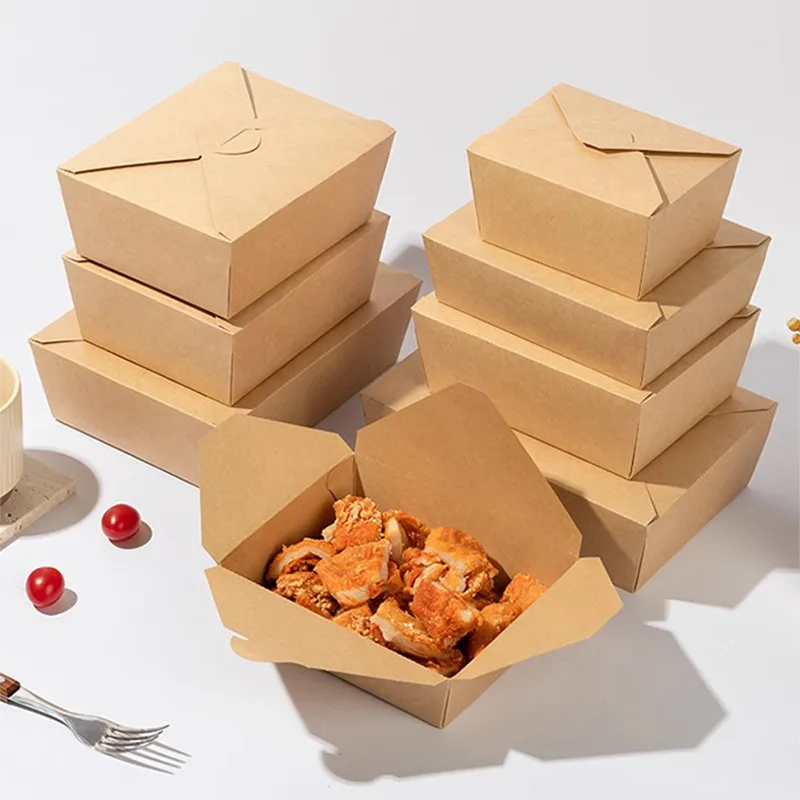Grill, Chill, and Go Green: How Summer Holidays in the U.S. Are Serving Health and Sustainability
Summer in the United States has always been a time of excitement and indulgence. It’s when families gather for fireworks, parades, beach days, and backyard feasts. But a quiet transformation is unfolding across these sun-soaked celebrations—one where kale replaces ketchup, compostable containers replace plastic trays, and eco-consciousness becomes a part of the party.
From the Fourth of July to Labor Day, Americans are reimagining summer holidays with health, wellness, and the environment in mind. Alongside the shift toward more plant-based and whole-food meals, there’s a parallel movement in packaging: biodegradable paper food containers, takeaway food boxes, and Kraft paper boxes are stepping up to serve the nation’s fresh new food culture.
The Rise of Health-Conscious Celebrations
A new generation of consumers—led by Millennials and Gen Z—is demanding healthier food choices that also support sustainable practices. Summer events, once dominated by processed snacks and sugary drinks, now proudly feature smoothie bars, veggie taco trucks, and organic produce stands.
This trend is visible in every corner of American summer culture:
-
Farm-to-festival pop-ups offering fruit bowls and cold-pressed juices
-
Healthy BBQ alternatives like grilled mushrooms, tofu skewers, and rainbow slaws
-
Picnic kits with quinoa wraps and hummus in paper food boxes instead of plastic
The food isn’t just lighter and greener—it’s also packaged with purpose. Brands and vendors are embracing Kraft paper boxes and leak-resistant paper food containers that match the message of mindful consumption.
Celebrating Responsibly: Summer’s Main Events
Fourth of July: Eco Meets Americana
Traditionally, Independence Day has been a red-meat-and-fireworks affair. But this iconic summer holiday is getting an eco update. Across the country, barbecue menus now include cauliflower wings, lentil burgers, and grilled corn with lime—all served in takeaway food boxes that are 100% compostable.
Cities like San Francisco and Seattle are implementing green guidelines requiring food vendors to use paper food containers and other biodegradable packaging at public celebrations. Not only does this reduce landfill waste, but it also reflects the evolving values of the modern American consumer.
Fireworks still light the sky, but now so do ideas of clean eating, sustainability, and climate responsibility.
Juneteenth: Soulful Food, Sustainable Future
Juneteenth is gaining momentum as both a cultural and culinary celebration. While traditional soul food remains central, chefs and communities are blending heritage recipes with health-focused updates—baked yams, vegan mac & cheese, and slow-cooked greens with organic spices.
Street vendors and local eateries supporting Juneteenth events increasingly turn to paper food boxes and Kraft paper packaging to serve their meals in a way that honors both tradition and progress. It’s a conscious mix of identity, health, and environmental stewardship.
Labor Day: Ending Summer with Purpose
As summer comes to a close, Labor Day weekend marks a moment of reflection and reset. Families head to parks, beaches, and mountain trails with nutritious snacks and meals in tow. You’ll find more lentil salads, grilled zucchini, and protein bars—and fewer hot dogs or soda cans.
Reusable coolers are now packed with paper food containers filled with chopped fruits, homemade dips, and organic sandwiches. And when the meal is done, the compostable packaging makes cleanup effortless and environmentally sound.
This shift toward healthy, low-waste dining aligns with Labor Day’s theme: respecting hard work and looking toward a better future.
The Packaging Revolution: Function Meets Sustainability
Today’s paper food containers are not the flimsy cups of the past. They’re engineered to resist heat, moisture, and oil—making them perfect for everything from summer salads to saucy entrees.
Here’s how they’re elevating the dining experience:
-
Takeaway food boxes now come with built-in compartments and secure closures for easy transport.
-
Kraft paper boxes offer a minimalist, rustic look that’s ideal for artisan meals and modern branding.
-
Coatings used in these containers are plant-based or water-resistant without plastic linings.
Many summer vendors now advertise their sustainable packaging as part of their value proposition. It’s no longer just what’s inside that matters—it’s what it’s served in.
Why This Matters: The Environmental Impact
Let’s break it down. Traditional plastic and foam containers take hundreds of years to decompose, often leaching toxic chemicals into soil and water. In contrast, biodegradable paper food boxes and Kraft paper containers break down naturally, especially when composted.
A typical summer festival serving 10,000 meals can avoid thousands of pounds of plastic waste just by switching to compostable takeaway food boxes. That’s not just an eco-statement—it’s a measurable step toward sustainability.
Local governments are catching on. More cities are offering compost bins at festivals and requiring food vendors to use green-certified packaging.
Small Actions, Big Change
The good news? You don’t need to be an event organizer to make a difference. As an individual or family, here’s how you can join the green summer movement:
-
Choose vendors that use paper food containers or biodegradable options
-
Bring your own reusable utensils and napkins to public events
-
Support businesses that invest in sustainable packaging
-
Opt for Kraft paper boxes when packing your picnic, instead of plastic or aluminum
These choices don’t just benefit the planet—they improve your dining experience. There’s something deeply satisfying about eating a fresh salad under the sun, knowing your meal didn’t leave behind harmful waste.
Looking Forward: Summer 2025 and Beyond
America’s summer traditions are evolving. While the spirit of celebration remains, the way we celebrate is changing. Food has become an expression of values—health, community, and care for the Earth.
As more people embrace these values, we’ll continue to see innovation in both meals and materials. Expect to see:
-
More zero-waste food trucks
-
Composting stations at parades and picnics
-
Creative uses of takeaway food boxes for everything from ice cream to poke bowls
-
Brand storytelling focused on eco-packaging and health-conscious menus
By combining nutritious, joyful eating with sustainable presentation, we create a summer culture that’s just as vibrant—but far more thoughtful.



Comments